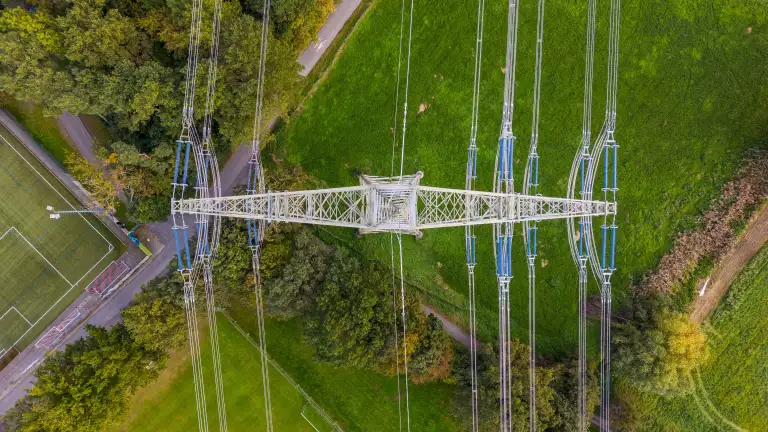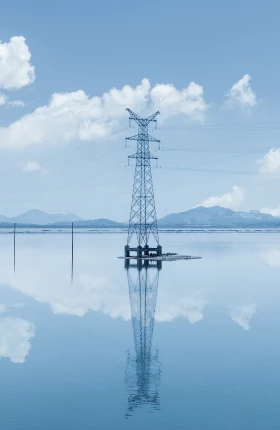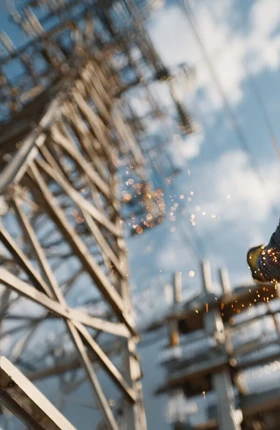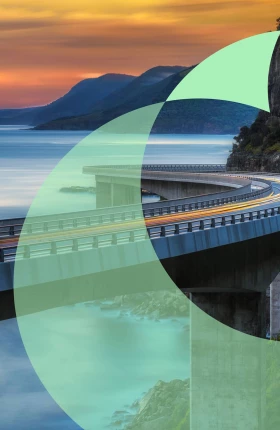The energy transition’s Achilles’ heel isn’t generation—it’s the electricity grid. Without a seismic shift in grid investment, the promise of clean, secure, and affordable energy is in danger of stalling. According to the International Energy Agency (IEA), global grid investment of $25 trillion—equivalent to one-quarter of the world's annual economic output today—will be needed from now to 2050 to achieve net zero.
The Energy Transition Is Gridlocked
But as grid companies and, more specifically, transmission grid companies embark on this once-in-a-generation task, they face complex challenges in five areas:
- Grid companies are already operating with constrained supply chains, resulting in severe shortages and higher prices for critical equipment and services. Prices for high-voltage direct current (HVDC) cables, for example, have increased by 50% over the past few years even as order lead times have tripled.
- Most grid companies lack the capabilities and workforce capacity to deliver the three- to fivefold increase in capital expenditures needed if they are to achieve their build-out goals.
- Government leaders are exerting substantial pressure on companies to build faster. But local opposition to projects—together with complex planning rules and, at times, the regulatory environment—creates additional hurdles for grid companies.
- The amount of capital involved will put pressure on electricity bills and trigger associated resistance from consumers. Furthermore, the financing of grid investments is already severely straining many companies' balance sheets.
- Many grid companies face growing grid congestion, further complicating grid build-outs. It will take time for companies' planned grid expansions to alleviate this problem.
Although the achievability of the IEA’s Net Zero Emissions scenario is receiving increasing scrutiny, these challenges (and the analyses and conclusions in our report) hold true with alternative scenarios as well. Whether the issue is net zero or load growth due to AI, or more efficient use of existing capacity, we will need a lot more electricity grid.
Stay ahead with BCG insights on energy
A Paradigm Shift
To deliver the necessary grid build-out in the face of these challenges, grid companies must adopt a paradigm shift in four critical areas:
- Clearing Congestion, Curtailing Costs: Rethinking Network Planning. To reduce the grid buildout's enormous future costs and the current short-term increase in grid congestion, grid companies need to adopt holistic planning approaches that take into account the key sectors involved in the energy transition and the most suitable long-term technologies and innovations, while also pushing for better utilization of grid capacity today.
- Capital Mastery: Delivering More with Less. Grid companies must improve their approach to project prioritization, their resource efficiency, and their execution speed by leveraging data-driven dynamic planning, asset standardization and modular design, differentiated execution strategies and processes, and digital tools.
- Strengthening the Backbone: Building Supply Chains to Deliver. To secure critical equipment and skills in a constrained supply environment, grid companies should manage multilevel supply chains far more tightly, develop sophisticated probabilistic demand planning, adopt bulk sourcing approaches supported by more imaginative contracting and pricing models, and foster key supplier relationships.
- Bridging the Disconnect: Aligning Stakeholders for a Net Zero Grid. Local opposition, regulatory inertia, and fragmented policies threaten the progress of grid build-outs. An unrelenting focus on working with stakeholders to create a more supportive environment for delivering grid infrastructure (through revised incentive structures for grid companies, greater planning and funding certainty, simpler permitting and planning processes, and improved industrial capacity at a national level) will speed up the journey to net zero. Achieving this goal requires collaboration not just between policymakers and grid companies but also with the public. A stronger narrative about the long-term economic prosperity that the grid build-out enables is critical to encouraging and retaining public support.
For their part, governments and regulators can play a vital role in facilitating a more cost-effective grid build-out by introducing supportive policies and approaches. For example, clearer choices in national and regional planning can improve capex productivity and accelerate build-out even if this means relinquishing some optionality and ending up with more capacity on the grid than would be required in the long term. Also, in establishing grid fee structures, policymakers should carefully reflect on the need for price signals to alleviate grid constraints and to more accurately reflect relative electricity transportation costs, which vary by location. Another option is a more interconnected and coordinated grid across countries.
Finally, given the vital importance of the electricity grid to society, the enormous investment required to make grids ready for a net zero world, and the complexities of grid build-outs, policymakers need to reconsider which financing, ownership, and funding models best serve each country’s public interests.
The development of our electricity transmission infrastructure stands at a critical inflection point, with the ambition to provide clean, secure, and affordable electricity to society as part of the energy transition. By delivering grids that are fit for the transition, transmission companies can help ensure a brighter energy future for all.






